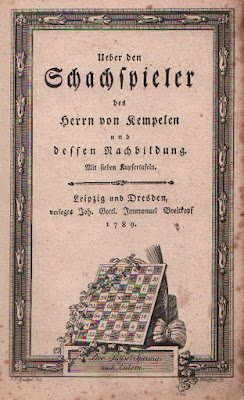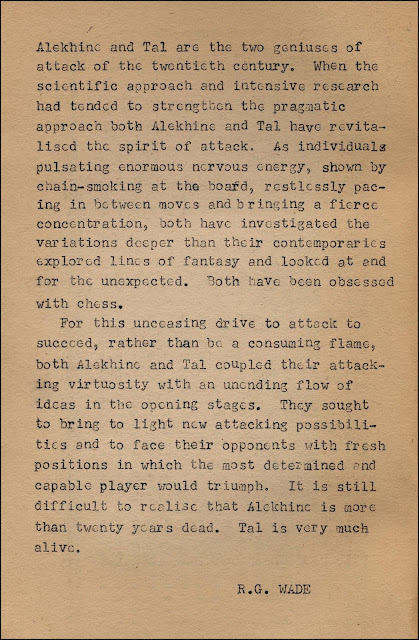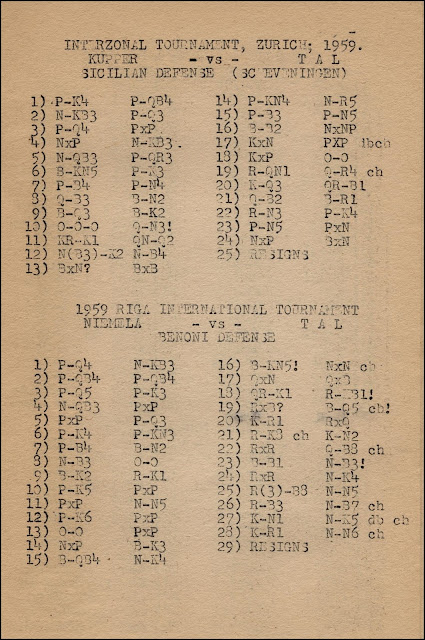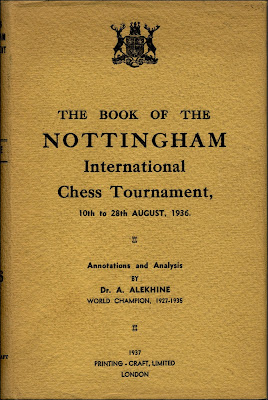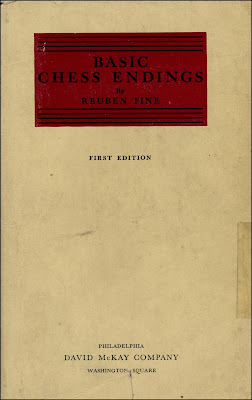The auction house Antiquariat A. Klittich - Pfankuch held their 71st auction today in the delightful town of Brunswick, Germany. Their twice yearly auctions specialise in chess literature and today nearly 800 lots went under the hammer in just 4 hours. I didn't attend the auction this time but followed the action online, although I don't think that online bidding was allowed.
Karl Klittich rattled through the lots at the rate of 200 an hour but not in a frenzied manner, just calmly and efficiently, and he still had time to share a few laughs with the audience. He frequently sharpened his pencil and was, as usual, ably assisted by the lady to his right who sits silently for hours recording the winning bids.
The auction catalogues are almost works of art themselves. This one has 290 pages, with very detailed descriptions and bibliographical information on each lot and many small illustrations throughout. There is even a five page index, how many auction catalogues have that? The online catalogue has a high definition image of every single lot. The production of the catalogues is very impressive and they must take many weeks to compile.
Today's auction included over 100 lots of memorabilia, autographs, pictures etc. with items signed by Capablanca and Emanuel Lasker fetching €500 and €450 respectively. However, Bogoljubow's signature sold for only €30.
The top two lots in the sale were the following German works:
754. Mauvillon, F(riedrich)
W(ilhelm) v. Belehrende Unterhaltung für junge angehende Schachspieler,
bestehend in hundert ausgesuchten Stellungen ... / bedingten Spielendungen ...
Ein Supplement zu seiner Anweisung zur Erlernung des Schachspiels. Gesammelt und
hrsg. Heft 2 - 5 (von 5) in vier Bänden gebunden. Essen, Bädeker, 1832 -
1836. 16°. Mit zusammen 400 ganzseitigen Diagrammen auf Tafeln. VIII, 56 S.; IV,
53 S., 1 Bl.; IV, 57 S., 1 Bl.; VIII, 121 (statt 126) S. Pappbände. This sold for €2,400.
724. Kempelen. (Racknitz, Joseph
Friedrich zu). Ueber den Schachspieler des Herrn von Kempelen und dessen
Nachbildung. Leipzig und Dresden, Joh. Gottl. Immanuel Breitkopf, 1789. 8°.
(Die 7 gefalteten Kupfertafeln fehlen.) Gestochener Titel, 4 Bll., 48
Seiten. Neuer brauner Halblederband mit Rückenschildchen. Sold for €1,000
In the bibliography section Seven Days in Bamberg by David DeLucia, published in 2015 and describing his visit to Bamberg to see Lothar Schmid's library, fetched €350 while Antonius van der Linde's works were in demand as usual with Geschichte und Litteratur des Schachspiels selling for €280 and the scarcer Schaakbibliotheek (c. 850 - 1875). Utrecht, G. A. van Hoften, 1875 making €300.

The English books generally fared disappointingly with books by Lewis, Bird, Walker, Selkirk and Lowenthal, for example, selling for only €15 to €30. However, there were a few highlights such as American Chess-Nuts by E. Cook etc., €190; the rare One Hundred and Twenty Problems by R. Kuiper (1842), €150; Lewis's Chess Problems, €250; Ponziani by Bingham, €160; and two books on the Steinitz-Lasker match of 1894 by H. Bird and J. Cunningham which sold for €250 each. One surprise to me was the sale of Lasker - Schlechter by L. Hoffer for €160.


 One English lot that I am not familiar with is:
916. Munger, Ned. Cultures, Chess & Art. A
Collector's Odyssey across seven Continents. Edited by
Lisa A. Smith.
3
(von 4) Bänden. San Anselmo, Mundial Press, 1996 - 2000. 4°. Mit vielen, teils
farbigen Abb. und Skizzen im Text. 119; 221 S., 1 Bl.; 207 S. Orig. Leinenbände
mit illustrierten Schutzumschlägen. Volume 1: Sub - Saharan Africa. Volume 2: The Americas.
Volume 3: Pacific Islands & Asia. This sold for €140.
However, I now note that chessbooks.co.uk also has these three volumes for sale.
One English lot that I am not familiar with is:
916. Munger, Ned. Cultures, Chess & Art. A
Collector's Odyssey across seven Continents. Edited by
Lisa A. Smith.
3
(von 4) Bänden. San Anselmo, Mundial Press, 1996 - 2000. 4°. Mit vielen, teils
farbigen Abb. und Skizzen im Text. 119; 221 S., 1 Bl.; 207 S. Orig. Leinenbände
mit illustrierten Schutzumschlägen. Volume 1: Sub - Saharan Africa. Volume 2: The Americas.
Volume 3: Pacific Islands & Asia. This sold for €140.
However, I now note that chessbooks.co.uk also has these three volumes for sale.
A.C.White's Christmas Series of books remain largely in the doldrums with a dozen English books selling for €30 to €60 each or being unsold. However the French work Les Tours de Force sur l'Echiquier. Paris, Numa Preti, 1906 sold for €300. The early Christmas Series books are, generally, the most valuable.
Two other French books realised high prices:
971. Gunsberg - Tschigorin. Match Gunsberg -
Tschigorine joué a La Havane di 1er janvier 1890 au 16 février 1890. Publié dans
les numéros de février, mars, avril et mai 1890 du journal d'échecs "La
Stratégie".
Paris, Numa
Preti, ca. 1890.
8°. Sold for €220.
973.
Philidor, A. D. (François André Danican) Analyse du jeu des échecs; Nouvelle
édition, considérablement augmentée ...
Londres, (ohne Verlegerangabe), 1777. 8°. Sold for €330.
The top Scandinavian book was:
1017. (Christiansen, Ulrik.)
Veiledning i Schackspil ved en Schackven. Kristiania, Kriedt, 1886. 8°. 40
Seiten. Neuer Pappband mit aufgeklebtem orig. Vorder- und Rückumschlag. Sold for €120.
A scarce Mexican book by Andres Vazquez sold for €400:
1068. Vázquez, Andrés Clemente. Análisis del juego de
ajedrez.
Libro à propósito para que pueda
aprender dicho juehgo, el que lo ignore del todo, sin necesidad de maestro ...
Segunda edicion corregida y notablemente aumentada. México, Gobierno Federal,
1885.
8°. Mit wenigen Diagrammen. 296 Seiten. Rotbrauner
Halbleinenband mit goldgeprägtem Titeldruck auf Rücken.
Tournament books in demand included :
Dusseldorf 1862, €230; Hamburg 1885, €120; Hamburg 1910, €130; Leipzig 1877, €140; London 1883. €160 and New York 1857, €150. However I was disappointed to see Folkestone 1933 selling for €70 having sold a copy myself last week for £10.

 Top lot in the periodicals section was 16 volumes of Olms reprints of Wiener Schachzeitung covering the years from 1898 to 1949, but not complete, which sold for €360. Other Olms reprints also sold well. Good prices were also realised for Ajedrez Chileno 1936-1938, €130; Chess Digest 1968-1975, €150; New Zealand Chess, 1976-1981, €100; Promadas 1928-1930, €150; Westdeutsche Schach-Zeitung 1948, €150.
Top lot in the periodicals section was 16 volumes of Olms reprints of Wiener Schachzeitung covering the years from 1898 to 1949, but not complete, which sold for €360. Other Olms reprints also sold well. Good prices were also realised for Ajedrez Chileno 1936-1938, €130; Chess Digest 1968-1975, €150; New Zealand Chess, 1976-1981, €100; Promadas 1928-1930, €150; Westdeutsche Schach-Zeitung 1948, €150.


 A buyer's premium of 15% plus VAT has to be added to all prices.
A buyer's premium of 15% plus VAT has to be added to all prices.
The next auction will be in June 2017.
















